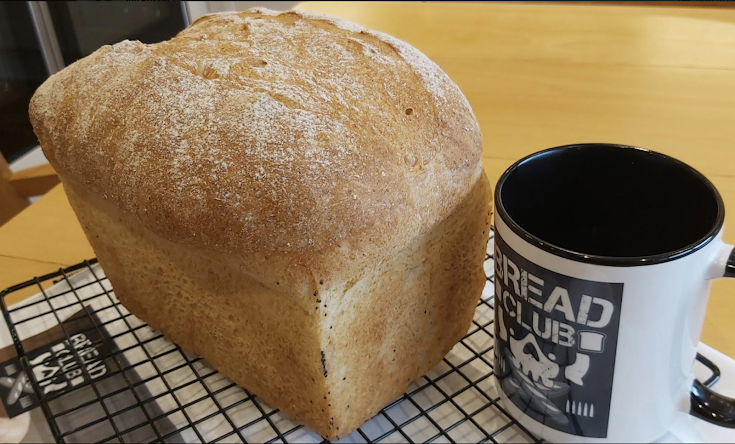Split Tin Loaf
This week, it's a an easy bake - the archetypal British Split Tin loaf.
As a teenager at Sunblest, Stockport (now Allied Bakeries), we'd churn these out by the dozens - not even the Baker's dozens, at that.
Incidentally, for those of you who are wondering why it's called the Baker's Dozen when the term actually means something that comes in 13s, we need to go back to the thirteenth century.
The Assize of Bread and Ale, statutory in law, regulated the price, weight and quality of bread and ale that was produced and sold in hamlets, villages and towns across England. It was probably the first English regulation for food and drink.
By the 17th century, local assizes were active in bringing bakers to task if their bread was sold short weight. As a way of protecting themselves against the law, bakers would add a proportion of bread to an order to ensure they were meeting the requirements of the law. For small orders, this might only be a slice of bread, referred to as 'in-bread'; but for a large order, it might require an additional loaf, a thirteenth loaf. This was known as the 'vantage loaf'
The term 'vantage loaf' is first recorded in 1612. Very often, the vantage loaf would be sold on by the buyer to a middle man, the 'huckster', who would sell it on the street, from a stall, or from door to door.
There's not much of a story behind this loaf as it stands. It's a decent-sized loaf with a long cut down the middle - giving it its name - the Split Loaf. It's homely, comforting and very versatile.
INGREDIENTS
500 gms strong white bread flour
10 mls salt
7 gms active yeast
300 mls lukewarm water
60 mls lukewarm milk
1 x 2lb loaf tin
Preheat the oven to 200⁰C
METHOD
If you're mixing by hand, prepare a 'sponge'. This is very straightforward.
- Mix the yeast with half of the lukewarm water
- Add this yeast and water mix to the remaining water
- Pour on top of the flour and salt mixture and stir (a chopstick is a good implement for this) until you have a thick, smooth batter. This is the 'sponge'.
- Leave in a warm place for 20 minutes until you see bubbles forming.
- Add the milk and mix to a firm dough
- Tip out onto a floured board and knead for ten minutes until smooth and elastic.
- Place in a lightly-oiled bowl, cover with cling film and place somewhere warm for about an hour until it's doubled in size.
Now, let's move on.
Take the dough and place on a lightly-floured surface. Knock it back (knock the air out of it) and shape into a rectangle, where the length is equivalent to the length of the oiled tin.
Roll it lengthways, tuck the ends under and place it in the tin with the seam side downwards.
Cover and leave to rise for about 30 minutes (until it's doubled in size).
Preheat your oven to 230⁰C.
Using a sharp knife, make one deep central slash down the dough and then dust the loaf with white flour.
Leave the dough for 15 minutes to recover.
As soon as you place the loaf in the oven, turn the heat down to 200⁰C and bake for 20 - 25 minutes until the loaf is golden brown and hollow when tapped on the bottom.
Cool on a wire rack.
Happy baking......
POSTSCRIPT
To produce a loaf with a deeper cut, you can use or of two methods:
i) reduce your water / milk slightly - by say, 10 mls and / or
ii) divide your dough into two and put each half alongside each other in the loaf tin. That way, they'll rise independently and give you a deep trench in the middle.
But it doesn't matter, because the proof of the baking is in the cutting. Next day - look at this lovely open crumb.
Very Happy Baking.....









Comments
Post a Comment